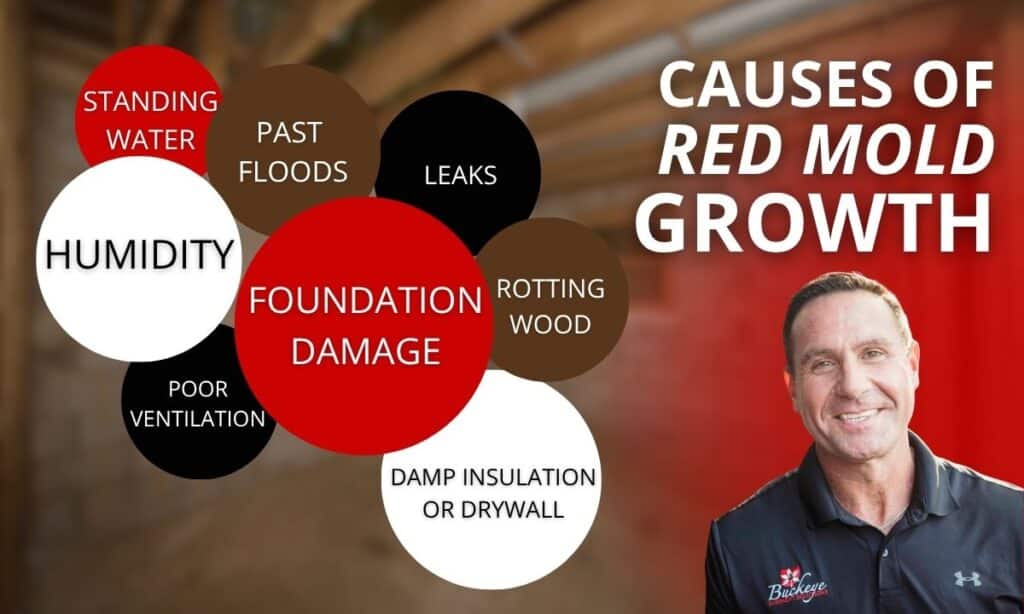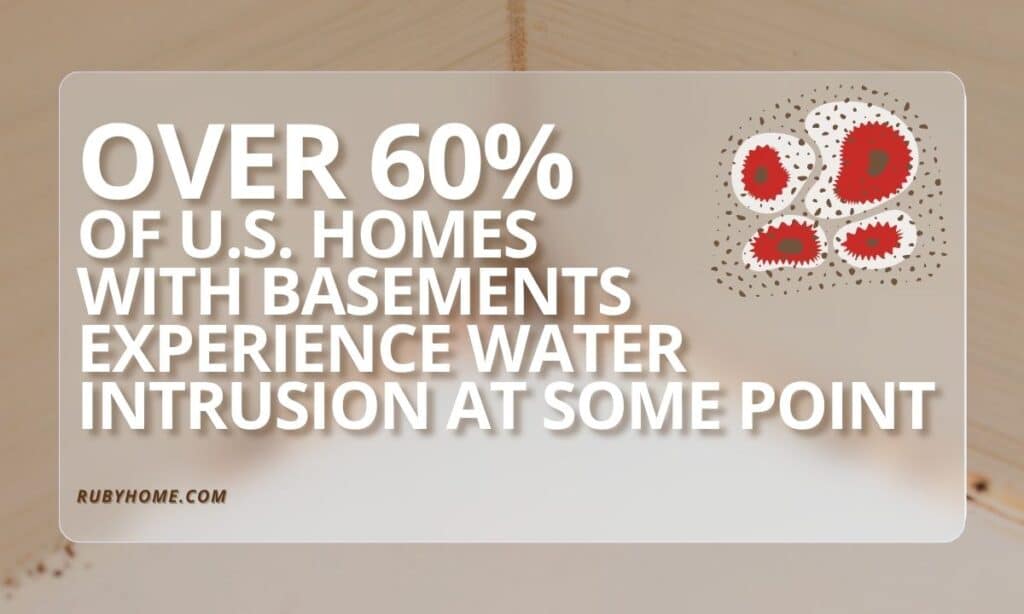Most people expect mold to be green, gray, or black, so when you find something red or pink in your basement or crawlspace, it can be alarming. Is it dangerous? Should you be concerned? What does it mean for your home?
In this guide, we’ll explain what red mold is, why it shows up in basements and crawlspaces, how it compares to other mold types, and what to do if you spot signs of it during a home check.
What Is Red Mold?
“Red mold” isn’t a scientific term. It’s a general label for several types of mold that look red or pink, especially in the early stages of growth.
Over time, these molds may darken into more common colors like brown or black. Common red-tinted molds include:
- Fusarium – often grows in damp building materials
- Aureobasidium – can appear red or pink before turning brown
- Neurospora – less common indoors but sometimes appears in moist crawlspaces
- Pink molds (like Serratia marcescens) – usually found in bathrooms but may spread in humid homes
Red mold can look slimy or powdery depending on the surface and conditions. It may not be more dangerous than black mold, but it still signals a moisture problem that needs attention.

Why Mold Shows Up in Basements and Crawlspaces
These areas are common trouble spots for mold because they’re often dark, humid, and poorly ventilated. Whether it’s red mold or another type, it usually appears when the space has:
- Standing water or past flooding
- High humidity
- Foundation leaks
- Poor drainage or ventilation
- Damp insulation, wood, or drywall
Mold growth is a symptom of moisture issues. If it’s growing in your basement or crawlspace, it may be time to consider waterproofing or encapsulation to stop it from coming back.
Is Red Mold Dangerous?
Red mold, like any indoor mold, can trigger health symptoms in sensitive individuals. These may include:
- Allergy-like reactions
- Sneezing or coughing
- Eye or skin irritation
- Worsening of asthma symptoms
Some species, like Fusarium, are known to produce mycotoxins under certain conditions. Even if the mold itself is not toxic, the presence of mold indicates that materials are staying wet, which can lead to wood rot or structural damage over time.
Buckeye’s team often finds hidden moisture issues during foundation inspections or crawlspace evaluations. Spotting mold is one clue that deeper problems may exist.
What It Looks Like
Red mold varies depending on where it’s growing and how long it has been there. Homeowners might see:
- Bright red or pink patches on wood, insulation, or plastic
- Splotchy discoloration that turns brown or black over time
- Slimy areas where water has collected
- Powdery build-up on walls or joists
It can be easy to mistake mold for rust or stains, especially in older homes. If you’re unsure, a professional inspection can confirm what you’re dealing with.

What to Do If You Find Mold
Whether it’s red or not, mold in the basement or crawlspace should be addressed quickly. These are enclosed spaces where poor airflow can allow spores to spread faster.
Start with these steps:
- Avoid disturbing the area – Scrubbing or brushing can release spores
- Reduce moisture – Use fans or a dehumidifier to dry out the space
- Inspect for water entry points – Check the foundation, plumbing, or vents
- Clean with caution – For small patches on hard materials, use vinegar or a mold cleaner
- Wear protective gear – Always use gloves, a mask, and eye protection
- Take photos – Documentation can help if repairs or claims are needed later
If the mold covers a large area, keeps coming back, or is embedded in porous materials, it’s best to schedule a professional evaluation.
Other Questions Homeowners Ask
Can I just paint over the mold?
No. Paint won’t kill mold and won’t stop it from growing. It can actually trap moisture and make the problem worse.
Is red mold always tied to structural issues?
Not always, but it may be a warning sign. Mold growing on framing, joists, or subflooring could lead to weakening over time. Buckeye’s team often checks these areas during structural assessments.
Should I use bleach?
Bleach only works on hard, non-porous surfaces and won’t soak into materials like wood or drywall. Safer, more effective mold treatments are available.
Can mold in a crawlspace affect my home’s value?
Yes. Moisture problems and visible mold can raise red flags during a home sale. That’s why encapsulation and drainage solutions are often recommended as long-term fixes.
When to Call in a Professional
If the mold is:
- Covering more than 10 square feet
- Reappearing after cleaning
- Showing up near the foundation or under the floor
- Spreading into insulation or wood framing
- Accompanied by musty smells or visible water damage
…it’s time for expert help.
A professional can assess both the visible and underlying issues. At Buckeye Basement Solutions, this includes checking for water seepage, air leaks, poor ventilation, and structural risk. You’ll get a clear plan to solve the problem and prevent it from coming back.
Final Thoughts
Red mold isn’t the most common type, but it can still point to a bigger issue. Whether it’s red, black, or green, mold in your basement or crawlspace means one thing: moisture is getting in and staying in.
If you’ve noticed discoloration, smells, or dampness in these areas, don’t wait to take action. A quick fix may help the surface, but long-term protection comes from controlling moisture at the source.
Buckeye Basement Solutions offers expert waterproofing, encapsulation, and foundation repair to help homeowners solve these issues before they become major headaches.



